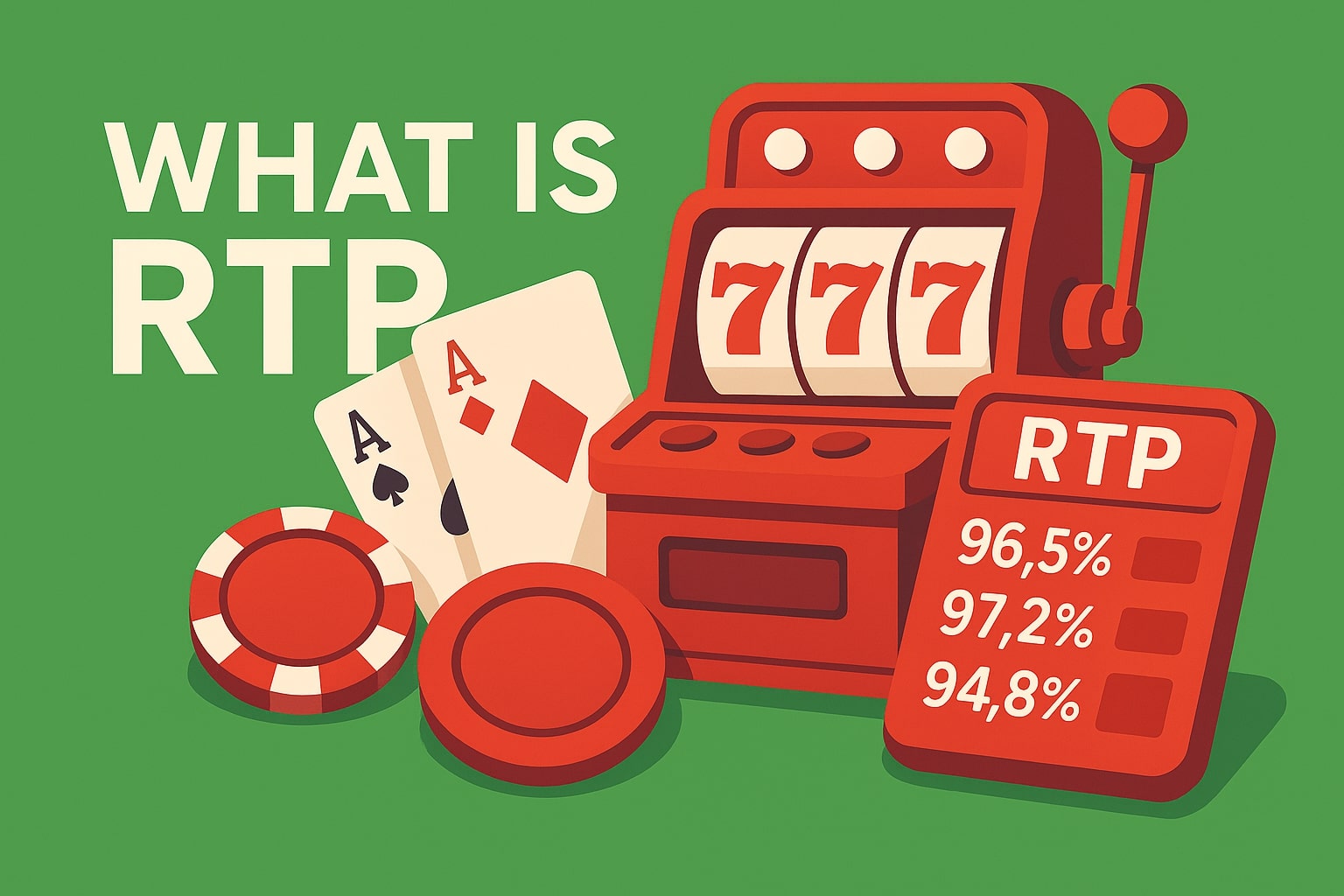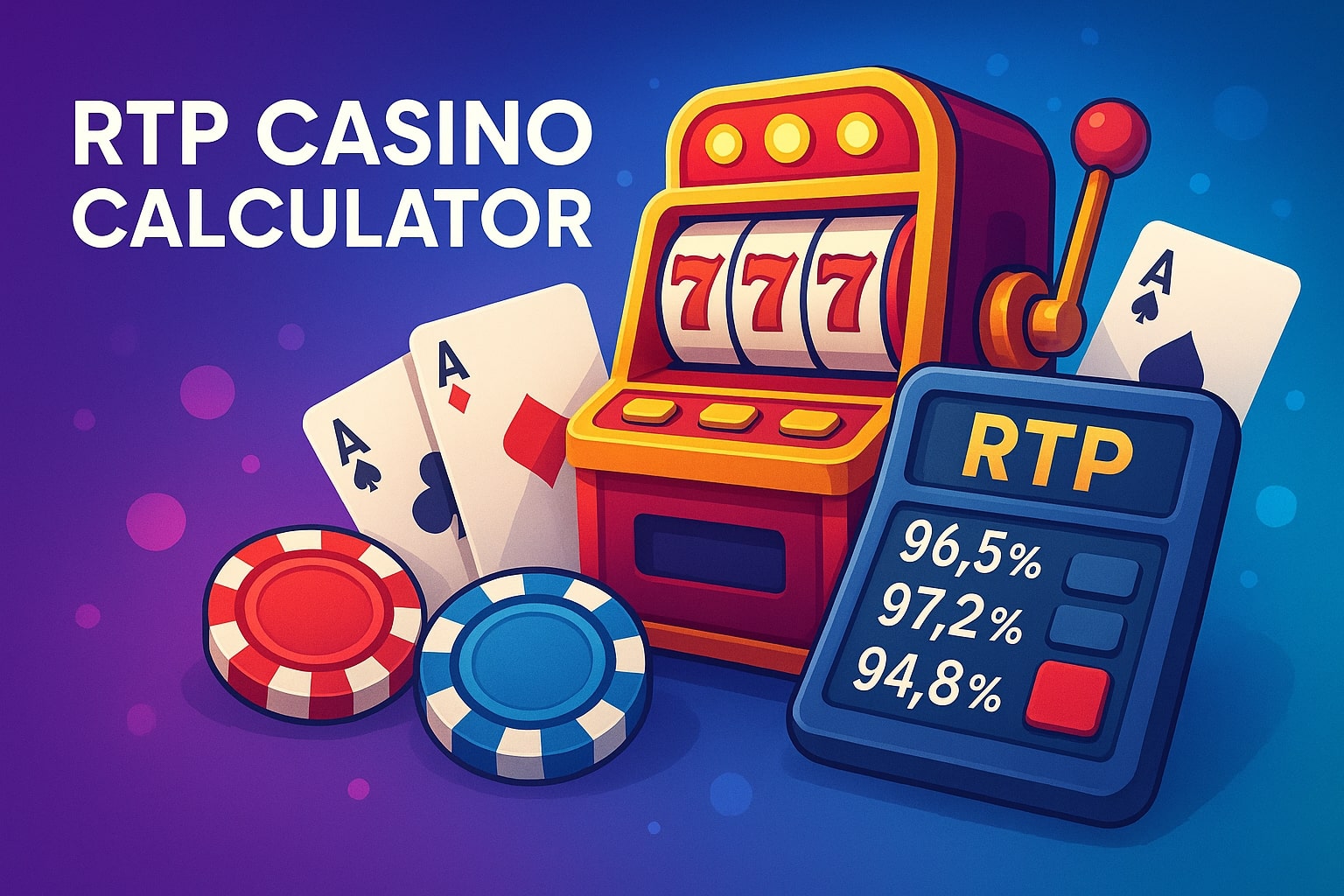Understanding casino games and their payout rates is crucial for making informed gambling decisions. A Casino RTP Calculator serves as an essential tool for players who want to analyze their potential returns and make strategic choices about which games to play. This comprehensive guide will walk you through everything you need to know about RTP calculations and how to use them effectively in your gambling strategy.
Game Parameters
Statistical Projections
| Spins | Expected Value ⓘ | Terrible Visit (5th %) ⓘ | Range on Winnings ⓘ | Great Visit (95th %) ⓘ | Chance of Winning ⓘ |
|---|
Unlock Full Strategy Access
You are using a limited version. Register in the casino that supports our tools and unlock full strategy features.
- Detailed probability reports
- Smart bet optimization
- Saved strategy profiles
- Safer bankroll presets
Create your account and open full access.
RegisterWhat is RTP (Return to Player)?
Return to Player (RTP) is a fundamental concept in casino gaming that represents the percentage of total wagers a casino game returns to players over time. Essentially, it’s your window into long-term winning odds and serves as a key metric for understanding how much money you can expect to get back from your gambling activities.
Return to Player is expressed as a percentage, and it works on a simple principle: if a slot machine has an RTP of 96%, it means that for every $100 wagered over an extended period, the game will theoretically return $96 to players. The remaining 4% represents the house edge, which is the casino’s profit margin.
It’s important to understand that RTP is a theoretical value calculated over millions of spins or game rounds. This means that in short-term play sessions, your actual results may vary significantly from the stated values due to the random nature of casino games. You might win a massive jackpot or experience a losing streak, but over the long term, the results should align closely with the theoretical RTP.

Why Calculate RTP?
Calculating RTP provides several strategic advantages for casino players. First and foremost, it helps you make informed decisions about which games offer the best potential returns on your investment. Games with higher percentages reduce the house edge and increase your likelihood of long-term success.
Understanding calculations also allows you to develop more effective gambling strategies. Regular players often seek out operators and games with higher payout percentages, as these provide better value over extended play sessions. By comparing percentage rates across different games, you can identify which options align best with your playing style and budget.
Additionally, Return to Player calculations help set realistic expectations for your gambling sessions. While short-term results can be unpredictable due to luck and variance, knowing the theoretical return rate helps you understand what to expect over time and plan your bankroll accordingly.
How to Use the RTP Calculator
Using an slots RTP calculator is straightforward and requires just a few key inputs to generate meaningful results. Most calculators allow you to compare different games and analyze potential outcomes based on various playing scenarios.
To use an slot machine RTP calculator effectively, start by entering the percentages for the games you want to compare. Ensure these values are between 0% and 100%, as they represent the portion of all wagered money a game will theoretically return to players over time.
Next, set the number of spins or game rounds you plan to play. RTP slot online calculator offer quick options like 250, 500, 1000, 2500, or 10,000 spins, or you can manually enter a custom number. This allows you to simulate potential returns over different play sessions, whether you’re planning a short gaming session or an extended gambling period.
The third step involves setting your bet amount per spin. Choose from preset options or manually enter your preferred bet size, typically ranging from $0.10 to $1,000. This customization ensures the calculation matches your actual betting habits and provides more accurate projections.
Finally, select your preferred currency and click calculate to see the results. The RTP casino calculator will display the total amount wagered, expected theoretical payout, and expected theoretical loss, along with comparisons between different games if you’re analyzing multiple options.

Understanding RTP Results
Interpreting slot RTP calculator results requires understanding several key metrics and their implications for your gambling strategy. The total amount wagered represents your complete investment over the specified number of spins or rounds, while the expected theoretical payout shows how much you can expect to receive back based on the game’s Return to Player percentage.
The expected theoretical loss is equally important, as it represents the house edge in monetary terms. This figure helps you understand the cost of entertainment and plan your bankroll accordingly. Remember that these are theoretical values based on long-term play, and actual short-term results will vary due to the random nature of casino games.
When comparing multiple games, pay attention to the difference in expected returns. Even small differences in Return to Player percentages can result in significant monetary differences over extended play sessions. For example, the difference between a 94% game and a 97% game might seem minimal, but over thousands of spins, this 3% difference can substantially impact your overall returns.
RTP Calculation Methods
The basic formula for calculating is remarkably simple: divide the total amount returned to players by the total amount wagered, then multiply by 100 to get a percentage. Mathematically, this is expressed as:
RTP = (Total Winnings / Total Wagers) × 100
For example, if a game has taken $1,000,000 in total bets and paid out $960,000 in winnings, its RTP would be 96%. This means that for every $100 wagered, the game returns $96 to players over time.
However, professional calculations involve complex statistical analysis that factors in all possible game outcomes. Game developers use sophisticated mathematical models to determine the theoretical RTP before a game is released, considering every possible combination of symbols, bonus features, and payout scenarios.
For practical purposes, players can calculate their personal RTP by tracking their wins and losses over extended play sessions. The formula becomes: RTP = (Total Wins / Total Bets) × 100. While this won’t match the theoretical percentage in short-term play, it provides insight into your actual performance over time.
Game Volatility and RTP
Game volatility, also known as variance, works hand-in-hand with RTP to determine your gaming experience. While it tells you the theoretical return percentage, volatility describes how that return is distributed over time. Understanding this relationship is crucial for selecting games that match your playing style and risk tolerance.
- High volatility games may have the same RTP as low volatility games, but they deliver winnings in larger, less frequent payouts. These games can produce significant winning streaks or extended losing periods, making them suitable for players with larger bankrolls who can weather the variance.
- Medium volatility games strike a balance between the extremes, offering a middle ground that appeals to a wide range of players. These games provide moderate-sized wins at reasonable intervals, creating an engaging experience without the extreme swings of high volatility slots or the smaller, more frequent payouts of low volatility options. Medium volatility games typically feature a mix of small, medium, and occasional larger wins, making them ideal for players who want some excitement without risking their entire bankroll on infrequent big hits. This volatility level often provides the best of both worlds – enough action to keep sessions interesting while maintaining reasonable bankroll sustainability for most players.
- Low volatility games provide more frequent but smaller wins, creating a steadier playing experience. These games are ideal for players who prefer consistent action and have smaller bankrolls, as they’re less likely to experience dramatic swings.
The tolerance around theoretical RTP varies based on volatility. High volatility games may show greater deviation from their theoretical Return to Player in shorter play sessions, but as the volume of play increases, the actual percentage should converge closer to the theoretical value.
RTP in Different Game Types
Different casino games offer varying RTP ranges, and understanding these differences helps you make informed choices about where to focus your gambling activities. Slot machines typically offer RTPs ranging from 85% to 98%, with most modern online slots falling between 94% and 97%.
- Table games often provide some of the best rates in the casino. European roulette offers an RTP of 97.70%, while American roulette drops to 94.74% due to the additional double-zero slot. Blackjack RTP, when played with basic strategy, can achieve percentage exceeding 99%, making it one of the most player-friendly games available.
- Video poker games can offer excellent percentage, often ranging from 95% to 99.5% depending on the variant and pay table. Jacks or Better video poker, when played with optimal strategy, typically offers an RTP around 99.54%.
It’s worth noting that slot machine manufacturers usually offer casinos multiple RTP options for the same game, generally within a range of 85% to 98%. Casinos can select which option to install based on their business needs and local regulatory requirements, which means the same game might have different percentage at different casinos.
Responsible Gambling
While RTP slots calculator is valuable tools for making informed gambling decisions, they should always be used within the context of responsible gambling practices. Remember that all casino games favor the house in the long run, regardless of their percentage. Even games with high percentage will result in losses over extended periods due to the mathematical advantage built into every casino game.
Set clear budget limits before you start gambling and stick to them regardless of your wins or losses. Calculations can help you understand the theoretical cost of your entertainment, but they shouldn’t be used to justify gambling beyond your means or chasing losses.
Consider RTP as one factor among many when choosing games, alongside your entertainment preferences, budget constraints, and risk tolerance. The most important aspect of gambling is ensuring it remains an enjoyable form of entertainment rather than a financial burden.
Frequently Asked Questions
RTP works by calculating the theoretical percentage of all wagered money that a game will return to players over an extended period. The calculation is based on the mathematical probability of all possible outcomes in the game, weighted by their respective payouts and frequencies of occurrence.
RTP stands for Return to Player and represents the percentage of total bets that a casino game pays back to players over time. It’s the inverse of the house edge – if a game has a 4% house edge, it has a 96% RTP.
The highest RTP slot machines typically offer returns between 97% and 99%, though these are relatively rare. Most high-quality online slots offer it between 94% and 97%. Some of the highest RTP slots include certain progressive jackpot games and premium video slots from reputable software providers.
A good RTP depends on the type of game you’re playing. For slot machines, anything above 96% is considered good, while 97% or higher is excellent. For table games, RTPs above 98% are considered favorable. However, remember that even high RTP games still favor the house, so always gamble responsibly within your means.




